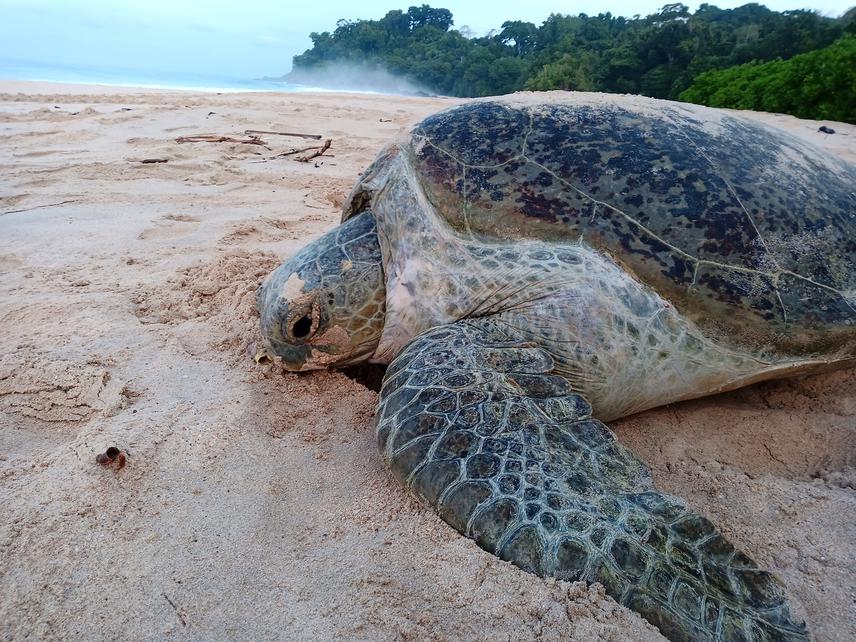Adéla Hemelíková
Other projects
22 Feb 2021
Community-Based Survey for Assessing the Domestic Tortoiseshell Trade and Initiating Conservation Steps on Sumatra, Indonesia
Molecular genetics has a wide range of practical implications for sea turtle conservation. It is commonly used to define conservation units and broad-scale connectivity between nesting and foraging habitats. Sumatra hosts internationally significant nesting and foraging populations of hawksbill and green turtles; however, there is no available genetic data on either species from this area. This project aims to identify haplotypes and genetic structures in five sea turtle rookeries in Sumatra. The obtained data will provide an essential baseline for further studies in the Asia-Pacific region and will be used for conservation management.
The fieldwork will be conducted at five sea turtle rookeries in Sumatra. The project sites were selected based on three criteria: estimated sea turtle population size, the proximity of the rookery to turtle use and trade hotspots, and the distance between the rookeries (no less than 200km). All sites are located on small islands and are among the largest hawksbill and green turtle rookeries in Sumatra.

A green turtle returning back to the sea after laying eggs on Bangkaru beach in the early morning. © Adela Hemelikova
The project’s main goal is to identify haplotypes and genetic stock structure in Sumatra's hawksbill turtle and green turtle rookeries and support further conservation through a newly established network. The methods described below will help to achieve these objectives:

Team getting ready for sampling a turtle. © Adela Hemelikova.
1. To identify mtDNA haplotypes in selected rookeries
2. To quantify overall genetic diversity at rookeries in Sumatra
3. To evaluate the stock structure and connectivity of hawksbill and green turtle rookeries in Indonesia and the Indo-Pacific
4. To establish baseline data for future genetic studies of feeding grounds throughout Indonesia and the Indo-Pacific
5. To contribute towards more effective sea turtle conservation.
For tissue sampling and data analysis, we will use standardized methods recommended by the Asia-Pacific Marine Turtle Genetic Working group. All data will be submitted in GenBank and thus become publicly available upon publication, enabling the collected data to be used in future studies.
For the second part of the project, which focuses on awareness-raising and creating a network for sea turtle management and conservation in Sumatra, we will use methods and conduct steps that we have identified as most needed during the first Rufford project.
Header: Measuring straight carapace length and width of green turtle hatchling. ©Rosalia Edward.